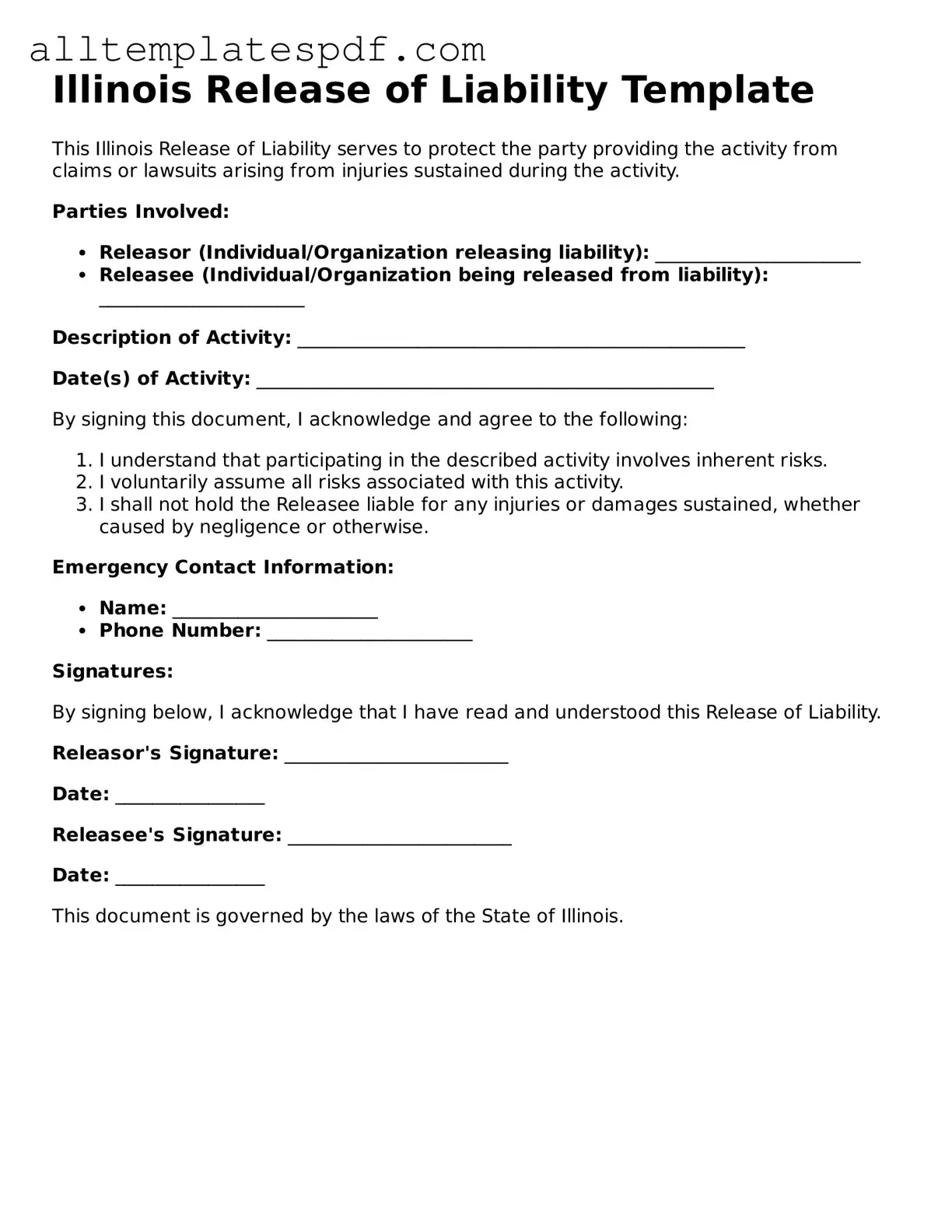When filling out the Illinois Release of Liability form, many individuals inadvertently make mistakes that can lead to complications down the line. One common error is failing to read the entire document thoroughly. It’s easy to skim through a form, especially when it seems straightforward. However, overlooking specific clauses or instructions can result in misunderstandings about the rights being waived or the responsibilities being assumed.
Another frequent mistake is not providing complete or accurate information. Whether it’s your name, address, or details about the activity, any inaccuracies can create issues. Double-checking all entries before submission is crucial. A small typo might seem insignificant, but it could lead to delays or even invalidation of the release.
Many people also forget to include the date on the form. This detail is essential, as it marks when the release becomes effective. Without a date, the document may not hold up in legal situations, leaving individuals vulnerable to liability that they intended to waive.
Some individuals neglect to consider the need for witnesses or notarization. Depending on the circumstances, having a witness sign the form or getting it notarized can add an extra layer of protection. Ignoring this step could weaken the enforceability of the release.
Another common oversight is failing to understand the scope of the release. It’s important to know exactly what you are signing away. Some people might believe they are only waiving liability for specific activities, while the language in the form could extend to broader situations. Taking the time to comprehend the implications is vital.
Lastly, many forget to keep a copy of the signed form for their records. After all the effort put into completing the document, having a personal copy ensures that you have proof of what was agreed upon. This can be particularly important if any disputes arise later.
